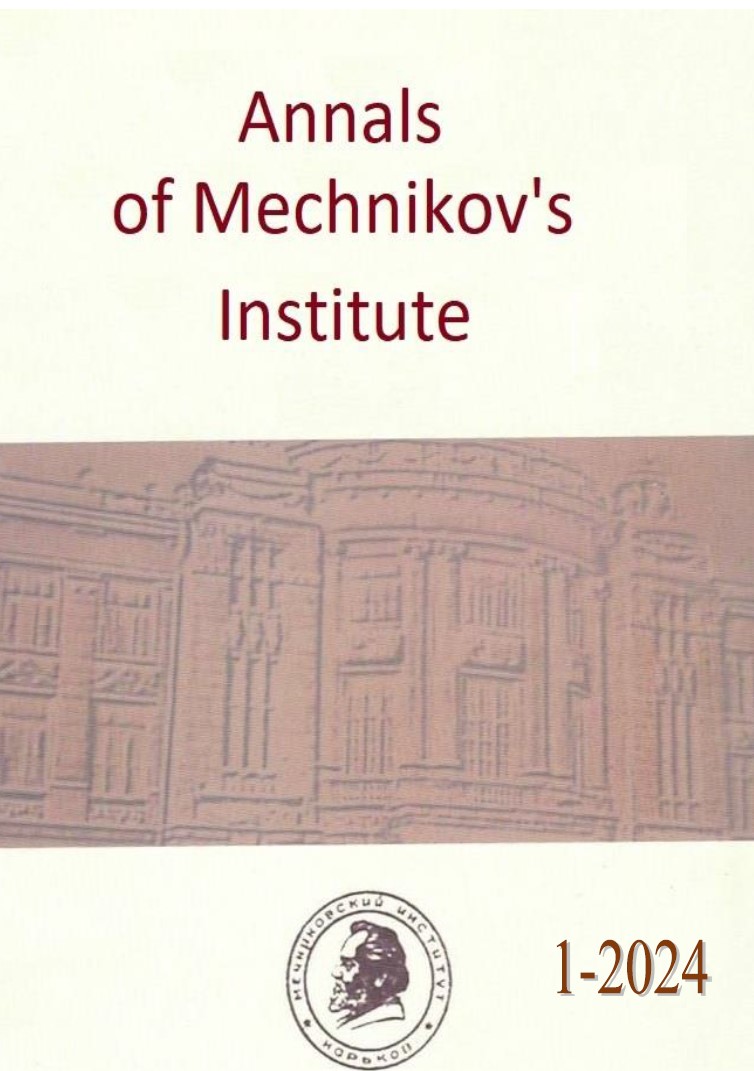Overview of the range of medicines included in the treatment protocol of COVID-19 in Ukraine
DOI:
https://doi.org/10.5281/zenodo.10838988Keywords:
Коронавірусна хвороба (COVID-19), Протокол лікування, Фармакотерапія, Лікарська формаAbstract
Introduction. The coronavirus disease (COVID-19) remains one of the most important medical and social problems in Ukraine and the world. In connection with the constant mutation of the SARS-CoV-2 virus, medicinal products (drugs), which according to evidence-based medicine showed their effectiveness, after a few months become little or ineffective against new subvariants of the virus. Since the treatment of COVID-19 is mainly symptomatic, and changes in symptoms and manifestations are characteristic of new strains, this requires the use of new drugs. Treatment protocols for COVID-19 are constantly changing and improving: ineffective drugs are removed, and drugs with proven effectiveness against new strains of the SARS-CoV-2 virus are added. Materials and methods. The research materials were data from the State Regis-ter of Medicinal Products of Ukraine and the information and reference publica-tion "Compendium"; protocol for providing medical assistance in the treatment of COVID-19 in Ukraine, methodological recommendations for the treatment of this disease in the USA and EU countries; instructions for the use of drugs, information on the website Tabletki.ua. An analysis of pharmaceuticals by main active substances (international non-proprietary name (INN)), dosage forms (LP), and producing countries was carried out. System, logical, complex, graphic methods are used.
Research results. Corona virus disease (COVID-19) is a severe acute respiratory viral disease, the causative agent of which is the SARS-COV-2 coronavirus. Frequent symptoms of the disease are fever, headache, myalgia, sore throat, dry cough and shortness of breath. In more severe cases, pneumonia, acute respiratory distress syndrome, thrombotic phenomena, joining of bacterial infections and viral damage to other organs and systems are possible. In Ukraine, on April 2020, by order of the Ministry of Health of Ukraine No. 762, the Protocol for the provision of medical assistance for the treatment of the coronavirus disease (COVID-19) was approved, which includes treatment schemes for children and adults. During the pandemic, the clinical protocol was changed and improved. During 2020-2023, 13 changes and additions to the treatment protocol were made by order of the Ministry of Health of Ukraine. The range of drugs for the treatment of COVID-19, which are included in the protocol, includes 33 INNs and is represented by 255 trade names, of which 48.6% are produced in Ukraine, and 51.4% are imported. The provision of drug treatment facilities is partly dependent on imports, and therefore the costs of pharmacotherapy are quite high, which requires conducting pharmacoeconomic studies to optimize the costs from the budget for the treatment of patients with COVID-19. Import substitution and domestic production of drugs that are included in the Protocol for the treatment of COVID-19 are promising. Conclusions: 1. A review of the range of drugs showed that due to frequent mutations of the SARS-CoV-2 virus and the development and introduction of new drugs into medical practice, the protocols for the treatment of COVID-19 in Ukraine and the world are constantly changing and improving. New drugs with proven safety and effectiveness are added, and ineffective ones are removed. 2. The range of drugs is presented in the Treatment Protocol of the 33rd INN of 10 ATS groups. The main group of drugs is injectable drugs (57.2%), which is proof that the protocol was developed and used primarily for the treatment of patients in hospital conditions. 3. Analysis of the pharmaceutical market of Ukraine showed the presence of 255 trade names of drugs recommended by the protocol. It was found that the range of drugs, in accordance with the Protocol for the treatment of COVID-19, includes 124 (48.6%) drugs of domestic production, and 131 (51.4%) - imported drugs, which indicates the need to produce more drugs of these groups in Ukraine. 4. In connection with the fact that the protocol is designed for the treatment of COVID-19 primarily in hospital conditions, it is necessary to develop and implement a pharmacist's protocol for the purpose of recommending drugs for the treatment of uncomplicated forms of the disease.
Keywords: coronavirus disease (COVID-19), treatment protocol, pharmacotherapy, dosage form
References
Protokol "Providing medical assistance for the treatment of the coronavirus disease (COVID-19)". URL: https://zakon.rada.gov.ua/rada/show/v0762282-20#Text
Coronavirus Disease 2019 (COVID-19) Treatment Guidelines. URL: https://files.covid19treatmentguidelines.nih.gov/guidelines/covid19treatmentguidelines.
European Union strategy for COVID-19 therapeutics. URL: https://commission.europa.eu/strategy-and-policy/coronavirus-response/public-health/treatments-covid-19_en
SamsonovVV., Silvestrov AM., Tachynina OM. Methodology of scientific research and examples of its use. K.: NUHT, 2022. 385 p. URL: https://ela.kpi.ua/bitstream/123456789/47687/1/MND.pd
Yang C.-L, Qiu X, Zeng Y.-K et al. Coronavirus disease 2019: A clinical review. URL: Eur Rev Med Pharmacol Sci 2020; 24 (8): 4585-4596 DOI: https://doi.org/10.26355/eurrev_202004_21045
Pauline Vetter, Diem Lan Vu, Arnaud G L’Huillier. Clinical features of covid-19 URL: https://doi.org/10.1136/bmj.m1470
Wagner C, Griesel M, Mikolajewska A, et al. Systemic corticosteroids for the treatment of COVID-19. Cochrane Database Syst Rev. 2021 Aug 16;8(8). URL: Update in: Cochrane Database Syst Rev. 2022 Nov17;11. URL: https://doi.org/10.1002/14651858.CD014963.
Wichman D., Sperhake J.-P., Lutgehetmann M. et al. Autopsy Findings and Venous Thromboembolism in Patients With COVID-19. URL: https://doi.org/10.7326/M20-2003
Giossi R., Menichelli D., Pani A. et al. A Systematic Review and aMeta-Analysis Comparing Prophylactic and Therapeutic Low Molecular Weight Heparins for Mortality Reduction in 32,688 COVID-19 Patients //Frontiers in Pharmacology. URL: https://doi.org/10.3389/fphar.2021.698008
Roberton T., Carter E. D., Chou V. B. et al. Early estimates of the indirect effects of the COVID-19 pandemic on maternal and child mortality in low-income and middle-income countries: a modelling study // Lancet. Global Health.- 2020. - V. 8, Is. 7. - P. 901-908. URL:https://doi.org/10.1016/S2214-109X(20)30229-1
Batool S, Vuthaluru K, Hassan A, et al. Efficacy and Safety of Favipiravir in Treating COVID-19 Patients: A Meta-Analysis of Randomized Control Trials. Cureus. 2023 Jan 12;15(1):e33676. URL:https://doi.org/10.7759/cureus.33676
Vaezi A., Salmasi M., Soltaninejad F.et al. Favipiravir in the outpatient treatment of COVID-19: a multicenter, randomized, triple-blind, placebo-controlled clinical trial. URL: https://doi.org/10.3390/arm91010004
Downloads
Published
How to Cite
Issue
Section
License
Copyright (c) 2024 Annals of Mechnikov's Institute

This work is licensed under a Creative Commons Attribution 4.0 International License.





